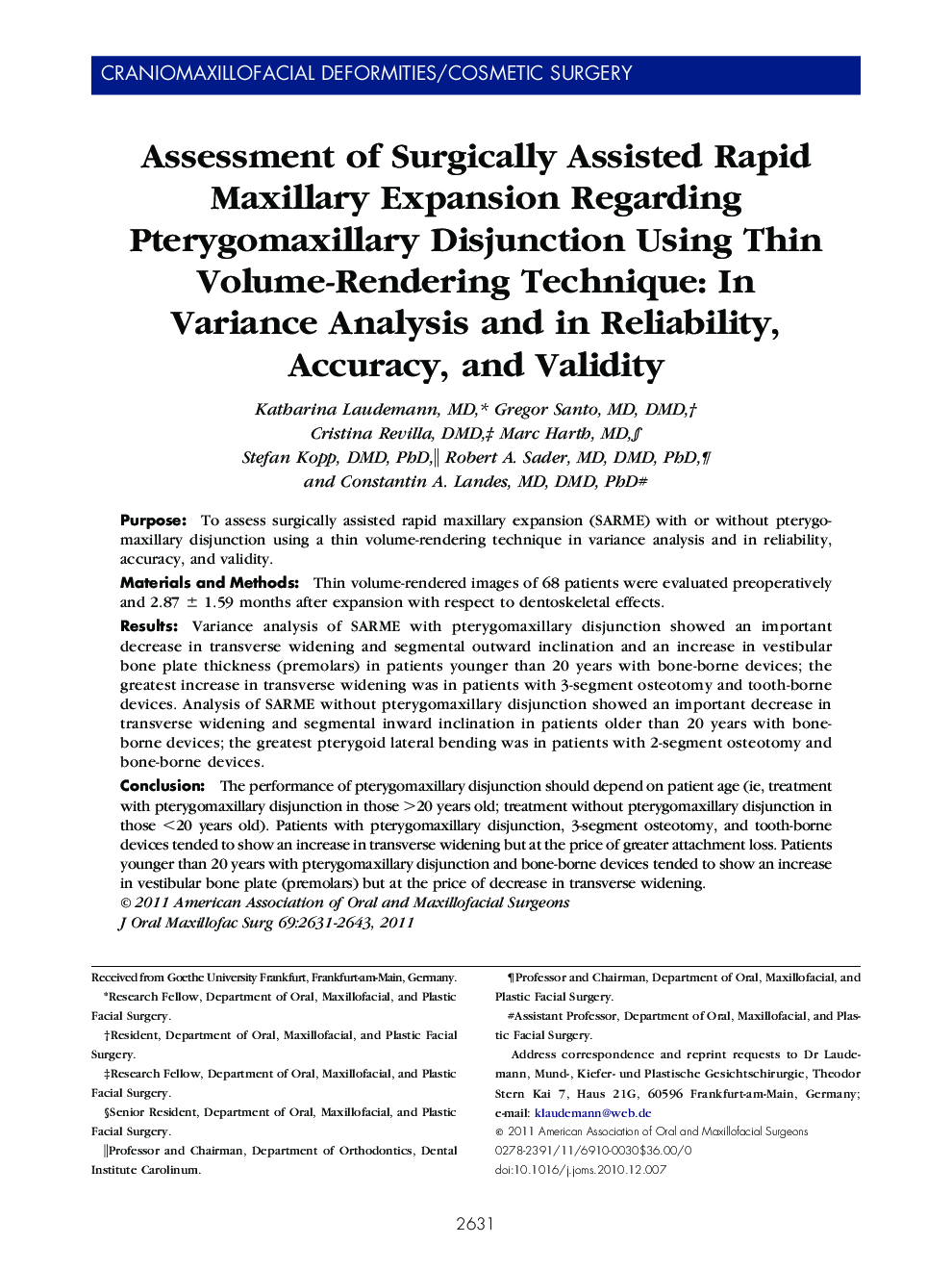| کد مقاله | کد نشریه | سال انتشار | مقاله انگلیسی | نسخه تمام متن |
|---|---|---|---|---|
| 3156829 | 1198140 | 2011 | 13 صفحه PDF | دانلود رایگان |

PurposeTo assess surgically assisted rapid maxillary expansion (SARME) with or without pterygomaxillary disjunction using a thin volume-rendering technique in variance analysis and in reliability, accuracy, and validity.Materials and MethodsThin volume-rendered images of 68 patients were evaluated preoperatively and 2.87 ± 1.59 months after expansion with respect to dentoskeletal effects.ResultsVariance analysis of SARME with pterygomaxillary disjunction showed an important decrease in transverse widening and segmental outward inclination and an increase in vestibular bone plate thickness (premolars) in patients younger than 20 years with bone-borne devices; the greatest increase in transverse widening was in patients with 3-segment osteotomy and tooth-borne devices. Analysis of SARME without pterygomaxillary disjunction showed an important decrease in transverse widening and segmental inward inclination in patients older than 20 years with bone-borne devices; the greatest pterygoid lateral bending was in patients with 2-segment osteotomy and bone-borne devices.ConclusionThe performance of pterygomaxillary disjunction should depend on patient age (ie, treatment with pterygomaxillary disjunction in those >20 years old; treatment without pterygomaxillary disjunction in those <20 years old). Patients with pterygomaxillary disjunction, 3-segment osteotomy, and tooth-borne devices tended to show an increase in transverse widening but at the price of greater attachment loss. Patients younger than 20 years with pterygomaxillary disjunction and bone-borne devices tended to show an increase in vestibular bone plate (premolars) but at the price of decrease in transverse widening.
Journal: Journal of Oral and Maxillofacial Surgery - Volume 69, Issue 10, October 2011, Pages 2631–2643